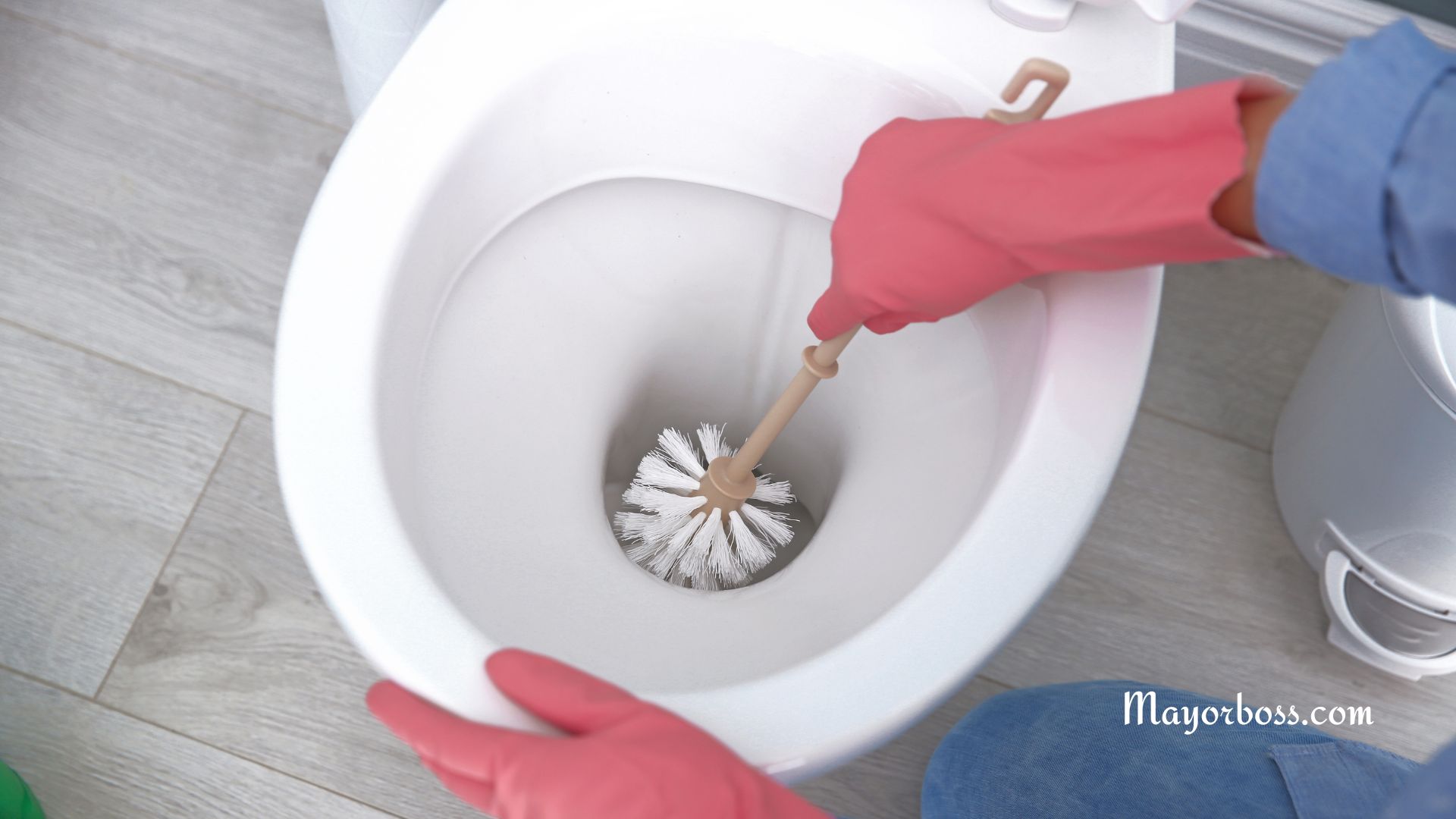This Is What Happens When You Put Vinegar In Your Toilet
You’ve probably heard that vinegar is a versatile tool in household cleaning, but did you know it can also work wonders in your toilet? This common kitchen staple isn’t just for cooking—it has a surprising range of uses that can make your cleaning routine easier, more effective, and even a little bit eco-friendly. Let’s look into what happens when you pour vinegar into your toilet and why you might want to consider making it a part of your regular bathroom maintenance.

Vinegar in Your Toilet Is More Effective Than You Think
Vinegar, especially white vinegar, is a mild acid that contains acetic acid. This makes it a powerful cleaning agent capable of dissolving mineral deposits, cutting through grime, and killing bacteria. When you pour vinegar into your toilet, several things happen that help maintain the cleanliness and hygiene of your bathroom.
You’ll See Cleaner, Stain-Free Toilet Bowls
One of the most visible effects of using vinegar in your toilet is its ability to remove stains. Over time, hard water and mineral deposits can leave unsightly stains in your toilet bowl, which can be difficult to remove with regular cleaners. Vinegar’s acidity helps dissolve these deposits, making it easier to scrub away stubborn stains.
If you pour vinegar into the bowl and let it sit for a few hours (or even overnight), you’ll notice that the stains loosen up significantly. A quick brush after that, and your toilet bowl should look noticeably cleaner.
Mineral Build-Up Will Become a Thing of the Past
If you live in an area with hard water, you’re no stranger to mineral build-up. These deposits can clog up the tiny holes under the rim of your toilet bowl, reducing the efficiency of each flush. This is where vinegar comes in handy.
Pouring vinegar into your toilet and letting it sit can help dissolve these mineral deposits. After soaking, scrubbing the area under the rim with a toilet brush will clear out the remaining build-up. Regular use of vinegar can prevent these deposits from forming in the first place, keeping your toilet functioning at its best.
Unpleasant Odors Will Be Neutralized
Toilets can harbor unpleasant odors, especially if they’re not cleaned regularly. Vinegar is a natural deodorizer, meaning it can neutralize bad smells without simply masking them. When you pour vinegar into your toilet, it works on a chemical level to neutralize the compounds responsible for those unpleasant odors.
Additionally, the bacteria-killing properties of vinegar help keep your toilet more hygienic, reducing the chances of lingering smells. Plus, unlike some commercial cleaners, vinegar doesn’t leave behind any artificial fragrances that can sometimes be overwhelming.
Say Goodbye to Harsh Chemicals
If you’re concerned about the health effects of using harsh chemicals in your home, vinegar is a safer alternative. It’s non-toxic. Consequently, you don’t have to worry about exposing yourself, your family, or your pets to harmful fumes or residues. Vinegar is also gentle enough that it won’t damage the porcelain of your toilet bowl, unlike some abrasive cleaners that can cause scratches over time.
Your Wallet Will Thank You
Vinegar is inexpensive and widely available, making it an economical choice for household cleaning. A large bottle of white vinegar can cost just a few dollars and will last for many cleaning sessions. Compare that to the price of specialty toilet cleaners, and you’ll see why vinegar is a smart, budget-friendly option.
How to Use Vinegar for the Best Results
If you’re ready to start using vinegar in your toilet, here’s how to do it for the best results.
The Basic Vinegar Flush
For a quick clean, simply pour about two cups of vinegar directly into the toilet bowl. Let it sit for at least 30 minutes, though letting it sit longer (even overnight) will yield better results. Afterward, scrub the bowl with a toilet brush and flush. This method is effective for routine maintenance and keeping your toilet fresh between deep cleans.
Deep Cleaning with Baking Soda and Vinegar
For a deeper clean, combine vinegar with baking soda, another powerful yet gentle cleaning agent. Start by pouring one cup of baking soda into the toilet bowl, followed by two cups of vinegar. The mixture will fizz as the baking soda reacts with the vinegar. Let it sit for about 15 minutes, then scrub the bowl with a brush and flush. This method is particularly effective for tackling tough stains and odors.
Cleaning the Tank with Vinegar
Did you know you can also clean your toilet tank with vinegar? A clean tank can prevent mineral deposits from forming and keep your toilet running smoothly. To clean the tank, pour about a gallon of vinegar into the tank and let it sit for a few hours. Then, flush the toilet a few times to rinse out the tank. This helps remove any build-up inside the tank and keeps the internal components of your toilet clean.
When Vinegar Alone May Not Be Enough
While vinegar is incredibly effective for many cleaning tasks, there are times when it may not be enough on its own. If your toilet has extremely stubborn stains or a significant build-up of minerals, you might need to use a more specialized cleaner in addition to vinegar. However, regular use of vinegar can prevent these issues from developing in the first place, reducing the need for harsher chemicals.
When to Call in the Professionals
If your toilet is still not up to your standards after using vinegar, it may be time to call in a professional plumber. Sometimes, the issue isn’t just with the cleanliness of the bowl or tank but with the plumbing itself. A plumber can inspect your toilet for any underlying issues and recommend the best course of action.
